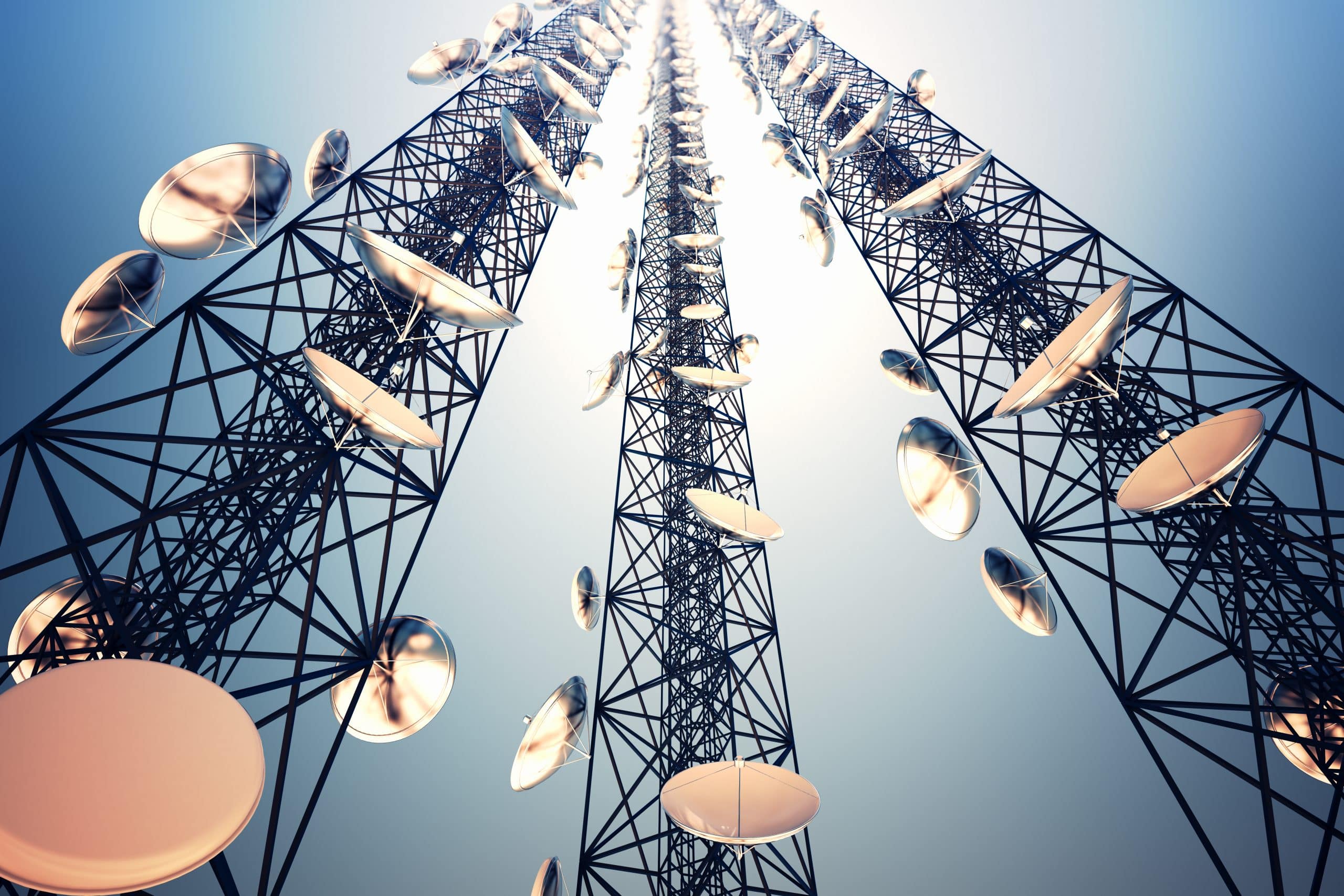In today’s technology-driven world, there exists a widespread, yet often overlooked force that quietly powers our modern lives. This unassuming force is radio frequency waves, often known as RF technology.
These waves are able to transmit information through airwaves, playing an important and necessary role in shaping our daily routines. From the moment we wake up, reaching for our smartphones, to winding down at night watching TV, RF signals shape our days in more ways than one.
Despite being around us and connecting much of what we do, RF technology remains a mystery for many. The average person usually only knows the name or the basics of the technology, rather than fully understanding how it works and how it’s become such an important aspect of society.
The Brief History of RF Technology

While radio waves have always been floating around us, their discovery through mathematics didn’t occur until 1873, when James Clerk Maxwell published “Treatise on Electricity and Magnetism.” Following this discovery, Heinrich Hertz was able to prove Maxwell’s theory through experimentation. Hertz laid the foundation for understanding radio waves, leading a revolution to study them.
During the late 19th century and early 20th century, several important players helped build on Hertz’s work, including Nikola Tesla and Guglielmo Marconi. Marconi was credited with inventing the radio in 1901, which revolutionized the way people communicated with each other and created a hallmark of modern society.
RF technology, though, hit its stride during the World Wars, where large advancements were made in communication systems, radio navigation, and radar. It played an important role due to its ability to enable long-distance communication, precise navigation, and early warning systems, which then became a model for today’s defense systems.
Following World War II, RF technology continued to advance, but for civilian applications, including the development of the FM radio, TV, and portable radios that anyone could have in their home. No longer was RF technology limited to the military—it began to shape the modern era of how people communicated, entertained, and lived their daily lives.
Today, RF technology is everywhere—from cell phones to Wi-Fi, the modern era would not exist without this technology.. It’s used for applications like GPS trackers, weather forecasting, satellite communications, and more. RF technology also plays a large role in protecting information and assets through many wireless device detection systems. As RF technology continues to advance, it holds the promise of even greater connectivity and innovations.
How Does RF Technology Work?
Radio frequency waves operate like electromagnetic ones where they are able to carry information on the energy of the waves. RF technology, at its heart, generates these radio frequency signals, transmits them through different mediums, and then are processed at the receiving end. The following steps are how RF technology works.
Step 1 – Generation
The generation of an RF signal begins usually with an RF oscillator or transmitter, which produces electromagnetic waves at a specific frequency. The frequency determines the properties of the signal, including its wavelength and how it interacts with its environment.
Step 2 – Modulation
Before the wave is sent out, information is added to the RF wave called modulation, which includes amplitude, frequency, or phase. This allows the wave to transit information such as voice, data, or even video.
Step 3 – Transmission
Once the wave has been modulated, it can be transmitted through an antenna, traveling through air, space, cables, and optical wires.
Step 4 – Propagation
During its transmission, the RF signal can go through many different forms, being absorbed, reflected, redacted, or diffracted by objects or structures in its path. How it behaves will depend on the wavelength and nature of obstacles in its path.
Step 5 – Reception
An antenna captures the RF signal at the receiving end, which then converts the waves into an electrical signal.
Step 6 – Demodulation
Demodulation reverses the modulation process the wave underwent and pulls out encoded data, like if it’s AM or FM, or even more complex data depending on where it’s going
Step 7 – Signal Process
After the data from the RF wave has been demodulated, it goes through one more step of processing where it’s filtered, amplified, and cleaned up to enhance the signal.
Step 8 – Data Interpretation
The last step in the process is when the data is interpreted according to its purpose. For example, it could be displaying images on a screen or converting audio signals for the radio.
What are the Types of RF technology?

RF technology is heavily present in our everyday lives, encompassing a wide range of applications and systems. Some everyday uses include TV signals, texting, calls, Bluetooth, and Wi-Fi.
It is also used for more advanced applications such as:
- NFC – near-field communications
- GPS – global positions systems
- Radar
- Satellite communication
- RFID – radio frequency identification
- Military and defense applications including electronic warfare
- IoT – internet of things, which includes smart home devices, wearables, and industrial sensors
Applications of RF Technology
RF technology, with its unparalleled ability to transmit information wirelessly over substantial distances in various forms, stands as the cornerstone for a multitude of applications across diverse industries. From the military and medicine to weather forecasting and television, its significance cannot be overstated.
For the military, RF technology is indispensable for radar systems, serving as the backbone of defense and early warning systems. In weather forecasting, it plays a pivotal role by detecting changes and ensuring accurate predictions. Notably, the aviation industry owes its existence to RF technology—without it, safe air travel would be virtually impossible.
Beyond defense and meteorology, RF technology plays an important role in healthcare systems, underpinning vital machinery like MRIs and wireless patient monitoring systems that safeguard lives. Even the agriculture industry uses RF technology, utilizing it to monitor soil conditions and crop health, leading to improved harvests and reduced food waste.
These examples underscore the pervasive utility and adaptability of RF technology in our contemporary society. It seamlessly facilitates communication, data transfer, navigation, and automation across a broad spectrum of industries, reaffirming its central role in the ongoing transformation of our interconnected world.
RF Technology and Cell Phone Detection
RF technology plays a pivotal role in cell phone detection, standing as a technological cornerstone that empowers security and law enforcement agencies with the indispensable capability to locate and track mobile devices. In the rapidly evolving landscape of the digital age, this function has become more critical than ever before. The ability to pinpoint the location of mobile devices is not only essential for law enforcement in criminal investigations but also plays a crucial role in ensuring public safety and national security.
RF technology, in conjunction with cellular networks and sophisticated algorithms, allows for the real-time tracking of mobile phones, aiding in the swift response to emergencies, missing persons cases, and criminal activities. It is used in safeguarding data privacy and cybersecurity, as it is able to protect against unauthorized tracking and hacking attempts.
RF technology’s role in cell phone detection is more than just convenience—it is an essential tool that helps maintain the delicate balance between individual privacy and societal security in the digital era.
RF Technology Challenges
RF technology, while highly important in our modern world, faces several challenges. For one, there is an increased amount of interference from various sources that can disrupt transmissions, causing unreliable or weak signals.
Spectrum crowding is also a growing concern, as an increasing amount of our devices rely on RF technology. In order to maintain excellent service, it’s important the spectrum is managed and protected properly. Ensuring security against signal interception is paramount, particularly in sensitive applications, such as with the military, government, and other commercial industries.
Signal propagation limitations, power consumption optimization, and environmental sensitivity all require constant attention to help ensure RF signals are created and transmitted properly.
Cost-effective solutions must be found amid evolving technology and growing demand to ensure RF technology continues to shape and support our interconnected world effectively.
The Future of RF Technology
RF technology holds the potential to revolutionize industries and enhance our daily lives even more than it does now. The rapid expansion of the Internet of Things (IoT) will continue to drive the demand for efficient and reliable RF communication, enabling smart homes, self-driving vehicles, and interconnected cities.
The quest for faster and more energy-efficient wireless networks are bound to lead to innovations, ensuring that RF technology remains at the forefront of the digital age. Whether it’s enabling the seamless flow of data, powering medical devices, or creating the next generation of technologies, RF technology is poised to continue to shape our future.







